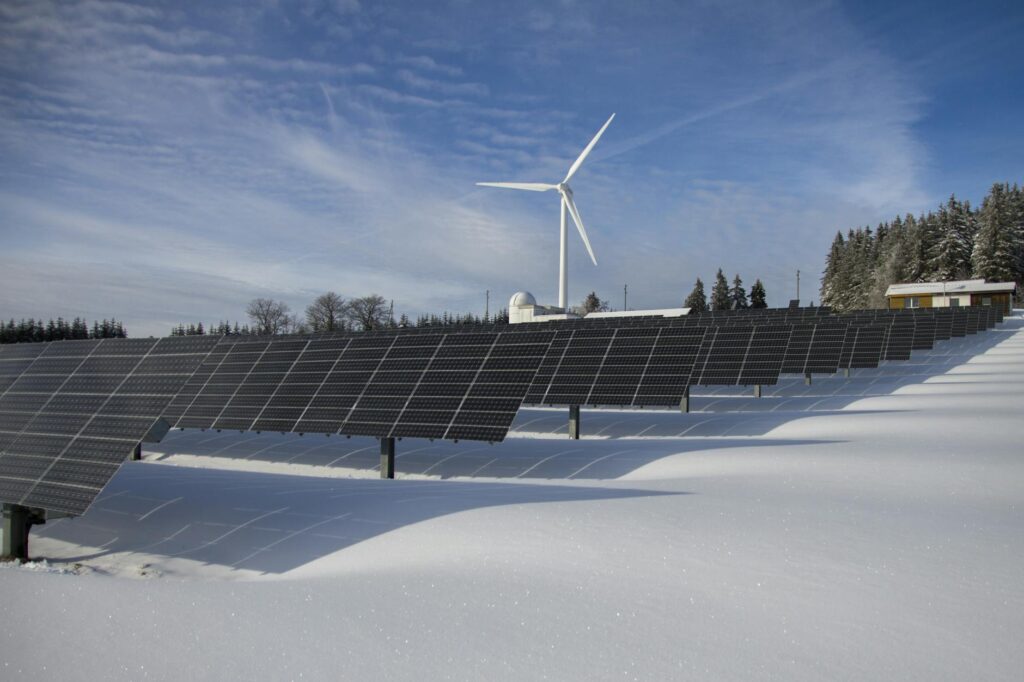Are you tired of paying sky-high energy bills during those chilly winter months? Imagine harnessing the power of the sun, even in a snowy climate.
It might sound like a tall order, but with the right knowledge and a pinch of creativity, it’s entirely possible.
Let’s explore the ideal placement for solar panels in snowy climates and how you can make the most of your solar investment.
The Winter Woes of Solar Panels
Winter can be tough on solar panels. Snow and ice might seem like insurmountable obstacles, but they don’t have to be. Understanding the challenges is the first step toward overcoming them.
Reduced Sunlight and Energy Production
Shorter days and longer nights mean less sunlight to capture. But fear not! Solar panels Calgary are more efficient than you might think, even under cloudy skies. While energy production will dip, it’s usually not as drastic as you might expect.
Snow Coverage
Snow can cover your panels, blocking sunlight and reducing energy production to zilch. However, snow usually slides off most panel surfaces relatively quickly. Plus, panels generate some heat while operating, which can help melt the snow faster.
Cold Weather Performance
It might surprise you, but solar panels actually perform better in cooler temperatures. Cold weather can enhance the efficiency of solar cells, making up for the reduced sunlight to some extent.
Finding the Best Spot for Your Solar Panels
When it comes to placing your solar panels in snowy climates, location is everything. Here’s how to pick the best spot for maximum efficiency:
South-Facing Roofs
In the Northern Hemisphere, south-facing roofs receive the most sunlight throughout the day. If you have a south-facing roof, consider yourself lucky. This orientation ensures the panels get the maximum amount of sunlight available.
Steeper Roof Angles
A steeper roof pitch helps snow to slide off the panels more easily. Ideally, you’ll want a roof angle between 30 and 45 degrees. This angle not only aids snow shedding but also optimizes sunlight absorption during winter months.
Ground Mounts
If your roof isn’t up to snuff, ground-mounted solar panels are a great alternative. You can position them at the perfect angle and height to catch the most sunlight while avoiding obstructions like trees and buildings.
Keeping Your Panels Snow-Free
Even with the best placement, your panels will likely encounter snow. Here’s how to keep them clear and functioning:
Automated Heating Systems
Automated heating systems can be installed to melt snow and ice off your panels. These systems use a small amount of energy to keep your panels clear, ensuring they produce energy even in snowy conditions.
Snow Guards and Rakes
Snow guards prevent large sheets of snow from sliding off your roof all at once. Meanwhile, a specialized solar panel snow rake allows you to clear snow without damaging the panels.
Regular Maintenance
Regularly check your panels for snow and ice buildup. A little effort can go a long way in maintaining their efficiency. Remember, never use metal tools or harsh chemicals; they can damage the panels.
Maximize Your Winter Sunlight
Making the most of limited winter sunlight involves a few strategic adjustments:
Strategic Tree Trimming
Trim trees and bushes that might cast shadows on your panels, especially in winter when the sun is lower in the sky.
Clean Panels
Dust and debris can accumulate on panels, reducing their efficiency. Regular cleaning ensures they perform at their best.
Use Micro-Inverters
Micro-inverters optimize the power output of each individual panel. If one panel is shaded or covered in snow, it won’t drag down the performance of the entire system.
Solar panels can indeed work efficiently in snowy climates. By understanding the challenges, choosing the right placement, and implementing effective snow management strategies, you can harness the power of the sun year-round.

